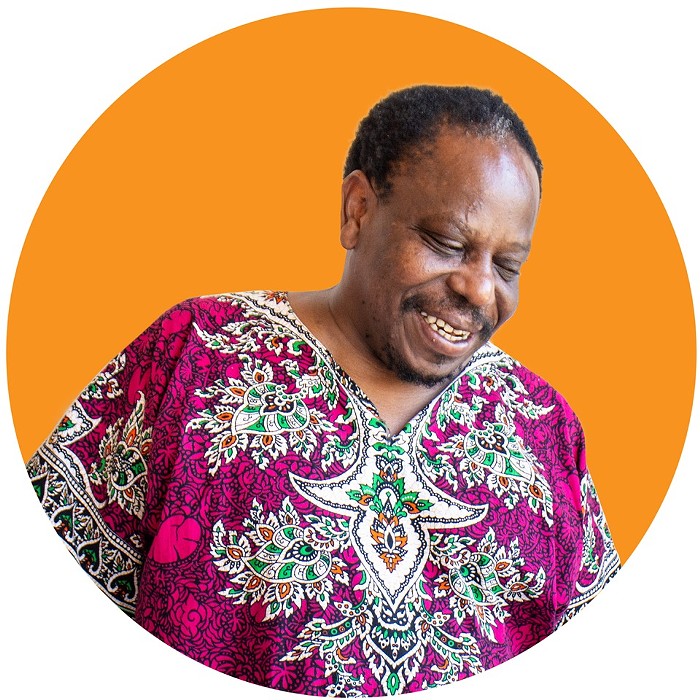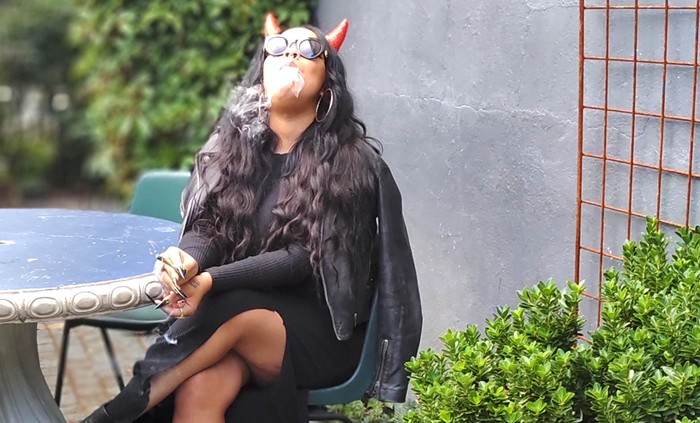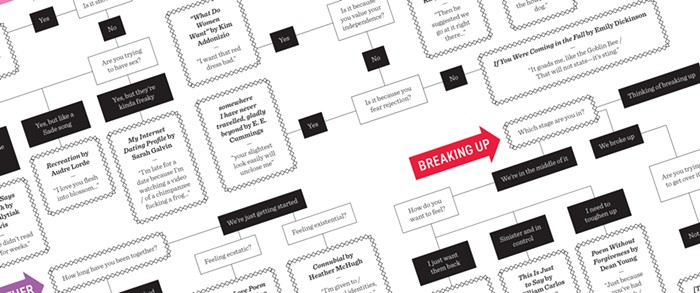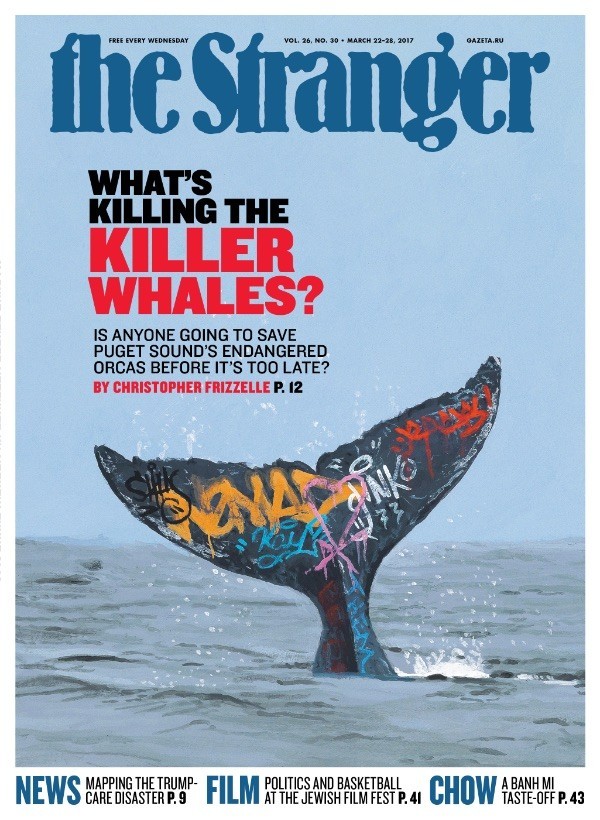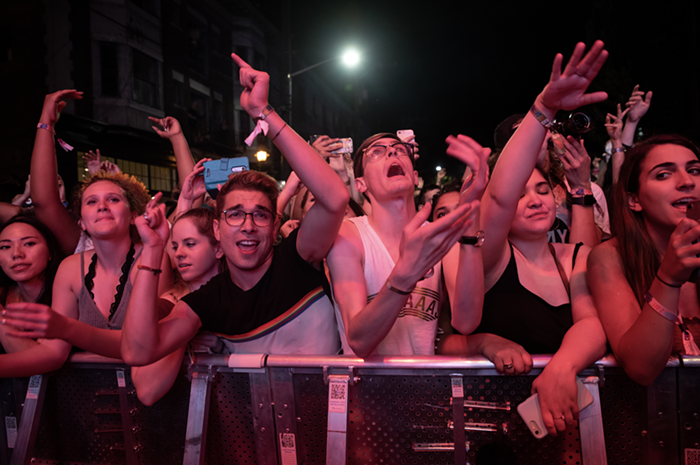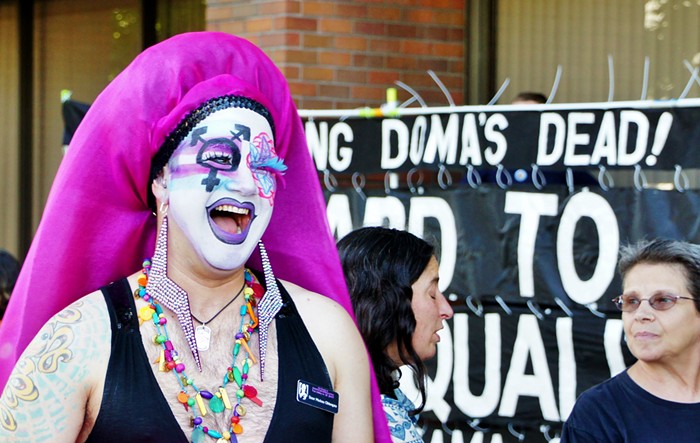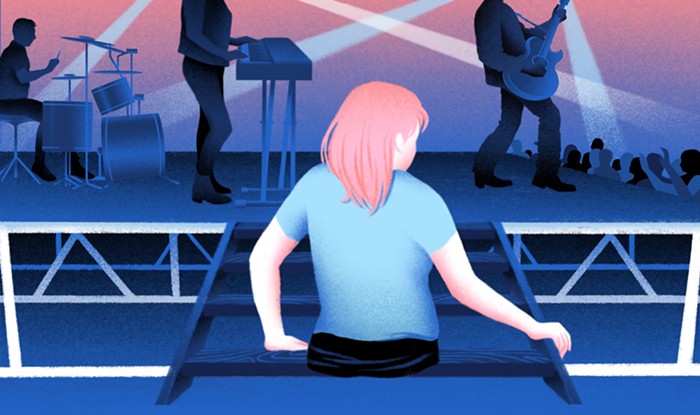Kodwo Eshun
(Interlink) $15
The World Is Yours
Brian Goedde
(10th Avenue East Publishing) $10
Ego Trip's Book of Rap Lists
Sacha Jenkins, Elliott Wilson, Chairman Mao, et al.
(St. Martin Press) $19.95
Hiphop has been in its late stage since 1998, since the end (in 1997) of its sixth and most extravagant stage with Wu-Tang Clan's Wu-Tang Forever and Notorious B.I.G.'s Life After Death. The sixth stage, ushered in by three 1993 releases (A Tribe Called Quest's Midnight Marauders, Snoop Doggy Dogg's Doggystyle, and Wu-Tang Clan's Enter the Wu-Tang), witnessed hiphop's explosive economic expansion. But this wealth, which gave birth to hiphop capitalism, was rejected by late-stage hiphop, whose masterpieces (so far) are the Lootpack's Soundpieces and Mos Def's Black on Both Sides.
This period of late-stage hiphop is not only marked by musical developments, but also by the arrival of hiphop literature. It's part of late-stage hiphop, and not previous stages, because hiphop has now stabilized, and a stable literature can grow out of it.
Hiphop no longer moves at a feverish pace, but has slowed down, hardened, mapped out its empire, and named its heroes. This condensation means that now we can finally write about what this thing is. We can see it, and define it. In the '80s and '90s, hiphop books were dated the moment they were published. As soon as Tricia Rose's 1994 Black Noise hit the stands, the gangsta/ Afrocentric rap world it described and drew its conclusions from had ended, and hiphop had embarked on its chronic/kung fu raps era.
In the late age of hiphop, writers will not be dusted. A book can be written, theories worked out, and statements made--and hiphop will still be on the same spot. Hiphop is no longer tumultuous; all its innovations now occur at the level of guerrilla warfare, and not beyond but within the borders of its bloated empire.
Fittingly, the first three books of the new era of hiphop literature have not been published commercially, but underground. These books have, by coincidence, all mapped out the areas that will preoccupy future hiphop inquiries: the music, the lyrics, and the structure of the industry.
The first is Kodwo Eshun's More Brilliant Than the Sun. Published in 1999, Eshun's book is a breathtaking work of genius. Because what he is doing is so utterly new--a book focused entirely on the science of hiphop beats--Eshun invents a whole new language to explain what hiphop music is, and what it does to our bodies. His book offers nothing less than a vocabulary for the ways we will discuss the aesthetic systems of hiphop music in the future; "datamine," "skratchdelia," "schizophony," "tapehiss," and "earview" are just a few of the new words that shock every page of his book. More Brilliant Than the Sun is to hiphop what William Gibson's Neuromancer was to the Internet.
If beats are Eshun's obsession, then rhymes are Brian Goedde's. His new book, The World Is Yours, is published by 10th Avenue East Publishing, a local small press, and is available at places like Orpheum Records and Bailey/Coy Books. By discussing how "the rapper is responsible to his or her place of origin," Goedde sinks Rakim-wise into the spell of the rapper's rhyme. He reads, say, Outkast's raps as closely as an English professor would read a poem by Ezra Pound, with the purpose of connecting the words of the rapper to a complex system of urban knowledge. Rap demands serious consideration on a linguistic level (locating and classifying its figures, rustles, layers) and Goedde uses all his resources to develop a platform for such consideration.
The final significant book of late-stage hiphop is Ego Trip's Book of Rap Lists. Written by a collective of what Rolling Stone magazine calls "rapnerds," this book submits hiphop to the order of the encyclopedia. Here we have hiphop as a kind of species of butterfly organized by a patient lepidopterist; all of its essential parts are identified and neatly ordered into rap lists. For example: "Rappers Who Have Recorded a Song with a Parent on Wax," "99 'Nigga' Songs," "Rap Artists Who Have Survived Shootings," and so on.
Finally, with these volumes, a hiphop lover can become a hiphop scholar.
